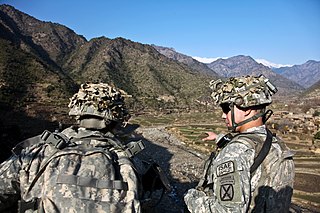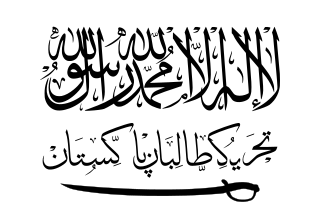
Afghanistan, officially the Islamic Emirate of Afghanistan, is a landlocked country located at the crossroads of Central Asia and South Asia. It is bordered by Pakistan to the east and south, Iran to the west, Turkmenistan to the northwest, Uzbekistan to the north, Tajikistan to the northeast, and China to the northeast and east. Occupying 652,864 square kilometers (252,072 sq mi) of land, the country is predominantly mountainous with plains in the north and the southwest, which are separated by the Hindu Kush mountain range. Kabul is the country's capital and largest city. Afghanistan's population is estimated to be between 36–50 million.

Kabul is the capital city of Afghanistan. Located in the eastern half of the country, it is also a municipality, forming part of the Kabul Province. The city is divided for administration into 22 municipal districts. In 2025 its population is estimated to be 6.74 million people. In contemporary times, Kabul has served as Afghanistan's political, cultural and economical center. Rapid urbanisation has made it the country's primate city and the 76th-largest city in the world.

Kandahar is a city in Afghanistan, located in the south of the country on Arghandab River, at an elevation of 1,010 m (3,310 ft). It is Afghanistan's second largest city, after Kabul, with a population of about 614,118. It is the capital of Kandahar Province and the centre of the larger cultural region called Loy Kandahar.

Mazar-i-Sharīf, also known as Mazar-e Sharīf or simply Mazar, is the fifth-largest city in Afghanistan by population, with an estimated 500,207 residents in 2021. It is the capital of Balkh province and is linked by highways with Kunduz in the east, Kabul in the southeast, Herat in the southwest and Termez, Uzbekistan in the north. It is about 55 km (34 mi) from the Uzbek border. The city is also a tourist attraction because of its famous shrines as well as the Islamic and Hellenistic archeological sites. The ancient city of Balkh is also nearby.

Osama bin Laden was a Saudi Arabian–born Islamist dissident and militant leader who was the founder and first general emir of al-Qaeda. Ideologically a pan-Islamist, Bin Laden participated in the Afghan mujahideen against the Soviet Union, and supported the Bosnian mujahideen during the Yugoslav Wars. Opposed to the United States' foreign policy in the Middle East, Bin Laden declared war on the U.S. in 1996 and advocated attacks targeting US assets in various countries, and supervised the execution of September 11 attacks inside the U.S. in 2001.

Operation Enduring Freedom (OEF) was the official name used by the U.S. government for both the first stage (2001–2014) of the War in Afghanistan (2001–2021) and the larger-scale Global War on Terrorism. On 7 October 2001, in response to the September 11 attacks, President George W. Bush announced that airstrikes against Al-Qaeda and the Taliban had begun in Afghanistan. Beyond the military actions in Afghanistan, Operation Enduring Freedom was also affiliated with counterterrorism operations in other countries, such as OEF-Philippines and OEF-Trans Sahara.

The Taliban, which also refers to itself by its state name, the Islamic Emirate of Afghanistan, is an Afghan political and militant movement with an ideology comprising elements of Pashtun nationalism and the Deobandi movement of Islamic fundamentalism. It ruled approximately 75% of Afghanistan from 1996 to 2001, before it was overthrown by an American invasion after the September 11 attacks carried out by the Taliban's ally al-Qaeda. The Taliban recaptured Kabul in August 2021 following the departure of coalition forces, after 20 years of Taliban insurgency, and now controls the entire country. The Taliban government is not recognized by any country and has been internationally condemned for restricting human rights, including women's rights to work and have an education.

The Democratic Republic of Afghanistan, later known as the Republic of Afghanistan, was the Afghan state between 1978 and 1992. It was bordered by Pakistan to the east and south, by Iran to the west, by the Soviet Union to the north, and by China to the northeast. Established by the People's Democratic Party of Afghanistan (PDPA) following the Saur Revolution in April 1978, it came to rely heavily on the Soviet Union for financial and military assistance and was therefore widely considered to be a Soviet satellite state. The PDPA's rise to power is seen as the beginning of the ongoing Afghan conflict, and the majority of the country's years in existence were marked by the Soviet–Afghan War. It collapsed by the end of the First Afghan Civil War in April 1992, having lasted only four months after the dissolution of the Soviet Union.

The population of Afghanistan is around 49.5 million as of 2025. The nation is composed of a multi-ethnic and multilingual society, reflecting its location astride historic trade and invasion routes between Central Asia, South Asia, and Western Asia. Ethnic groups in the country include Pashtun, Tajik, Hazara, Uzbek, as well as smaller groups such as Baloch, Nuristani, Turkmen, Aimaq, Mongol and some others which are less known. Together they make up the contemporary Afghan people.

The Soviet–Afghan War took place in the Democratic Republic of Afghanistan from December 1979 to February 1989. Marking the beginning of the protracted Afghan conflict, it saw the Soviet Union and the Afghan military fight against the rebelling Afghan mujahideen. While they were backed by various countries and organizations, the majority of the mujahideen's support came from Pakistan, the United States, the United Kingdom, China, Iran, and the Arab states of the Persian Gulf, in addition to a large influx of foreign fighters known as the Afghan Arabs. American and British involvement on the side of the mujahideen escalated the Cold War, ending a short period of relaxed Soviet Union–United States relations. Combat took place throughout the 1980s, mostly in the Afghan countryside, as most of the country's cities remained under Soviet control. The conflict resulted in the deaths of one to three million Afghans, while millions more fled from the country as refugees; most externally displaced Afghans sought refuge in Pakistan and in Iran. Between 6.5 and 11.5% of Afghanistan's erstwhile population of 13.5 million people is estimated to have been killed over the course of the Soviet–Afghan War. The decade-long confrontation between the mujahideen and the Soviet and Afghan militaries inflicted grave destruction throughout Afghanistan and has also been cited by scholars as a significant factor that contributed to the dissolution of the Soviet Union in 1991; it is for this reason that the conflict is sometimes referred to as "the Soviet Union's Vietnam" in retrospective analyses.

Hamid Karzai is an Afghan statesman who served as the fourth president of Afghanistan from July 2002 to September 2014, including as the first elected president of the Islamic Republic of Afghanistan from December 2004 to September 2014. He previously served as Chairman of the Afghan Interim Administration from December 2001 to July 2002. He is the chief (khān) of the Popalzai Durrani tribe of Pashtuns in Kandahar Province.

Mullah Muhammad Omar was an Afghan militant leader and cleric who founded the Taliban in 1994. During the Third Afghan Civil War, the Taliban fought the Northern Alliance and took control of most of the country, establishing the First Islamic Emirate for which Omar began to serve as Supreme Leader in 1996. Shortly after al-Qaeda carried out the September 11 attacks, the Taliban government was toppled by an American invasion of Afghanistan, prompting Omar to go into hiding. He successfully evaded capture by the American-led coalition before dying in 2013 from tuberculosis.

The International Security Assistance Force (ISAF) was a multinational military mission in Afghanistan from 2001 to 2014. It was established by United Nations Security Council Resolution 1386 according to the Bonn Agreement, which outlined the establishment of a permanent Afghan government following the U.S. invasion in October 2001. ISAF's primary goal was to train the Afghan National Security Forces (ANSF) and assist Afghanistan in rebuilding key government institutions; it gradually took part in the broader war in Afghanistan against the Taliban insurgency.

The Durand Line, also known as the Afghanistan–Pakistan border, is a 2,640-kilometre (1,640 mi) international border between Afghanistan and Pakistan in South Asia. The western end runs to the border with Iran and the eastern end to the border with China.

The Afghanistan men's national cricket team represents Afghanistan in men's international cricket. It is a full Member of the International Cricket Council (ICC) with Test, One-Day International (ODI) and T20 International (T20I) status.

The Taliban insurgency began after the group's fall from power during the 2001 War in Afghanistan. The Taliban forces fought against the Afghan government, led by President Hamid Karzai, and later by President Ashraf Ghani, and against a US-led coalition of forces that has included all members of NATO; the 2021 Taliban offensive resulted in the collapse of the government of Ashraf Ghani. The private sector in Pakistan extends financial aid to the Taliban, contributing to their financial sustenance.

A series of occasional armed skirmishes and firefights have occurred along the Afghanistan–Pakistan border between the Afghan Armed Forces and the Pakistan Armed Forces since 1949. The latest round of hostilities between the two countries began in April 2007. Militants belonging to Tehrik-i-Taliban Pakistan and Jamaat-ul-Ahrar also use Afghanistan's territory to target Pakistani security personnel deployed along the border. The Diplomat says that the presence of terrorists belonging to Tehrik-i-Taliban Pakistan on Taliban Afghanistan and Pakistan soil is the reason for sporadic shelling of Afghanistan's territory by Pakistani security forces.

The war on terror, officially Global War on Terrorism (GWOT), is a global military campaign initiated by the United States following the September 11 attacks in 2001, and is the most recent global conflict spanning multiple wars. Some researchers and political scientists have argued that it replaced the Cold War.

The Pakistani Taliban, formally called the Tehreek-e-Taliban-e-Pakistan, is an umbrella organization of various Islamist armed militant groups operating along the Afghan–Pakistani border. Formed in 2007 by Baitullah Mehsud, its current leader is Noor Wali Mehsud, who has publicly pledged allegiance to the Afghan Taliban. The Pakistani Taliban share a common ideology with the Afghan Taliban and have assisted them in the 2001–2021 war, but the two groups have separate operation and command structures.

The War in Afghanistan was a prolonged conflict lasting from 2001 to 2021. It began with the invasion by a United States-led coalition under the name Operation Enduring Freedom in response to the September 11 attacks carried out by al-Qaeda, toppling the Taliban-ruled Islamic Emirate and establishing the Islamic Republic three years later. The Taliban and its allies were expelled from major population centers by US-led forces supporting the anti-Taliban Northern Alliance. The conflict ended as the 2021 Taliban offensive reestablished the Islamic Emirate. It was the longest war in United States military history, surpassing the Vietnam War by six months.


















